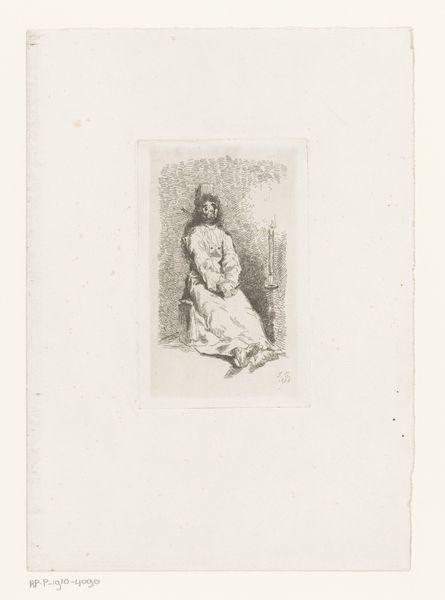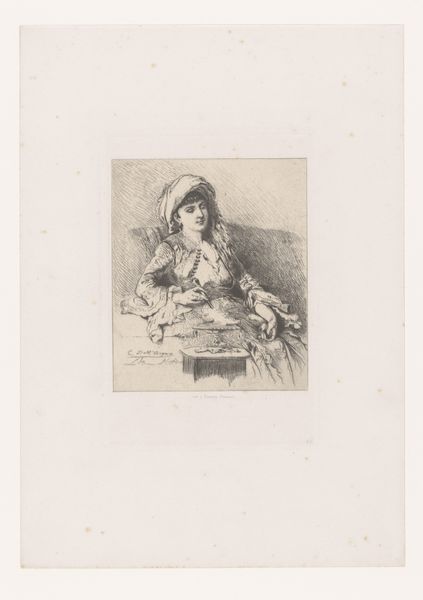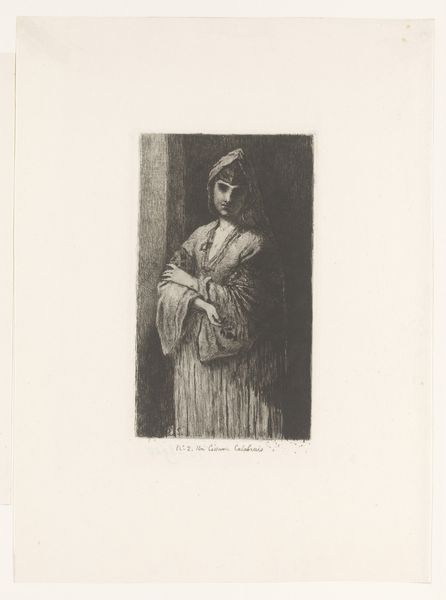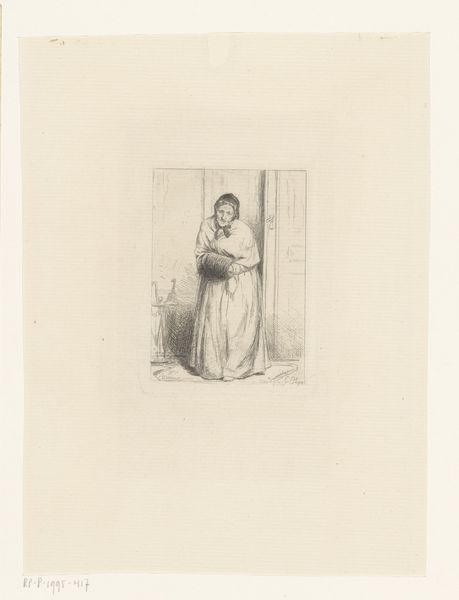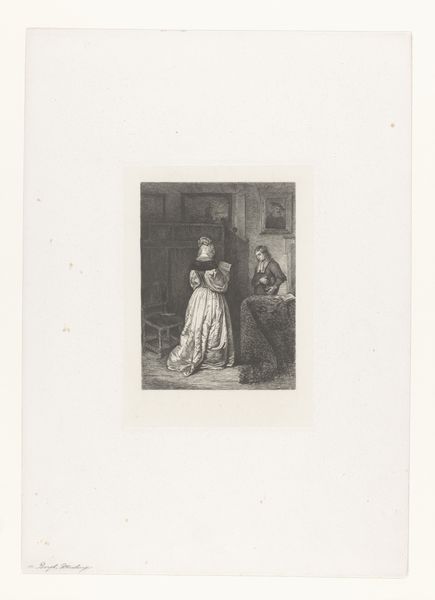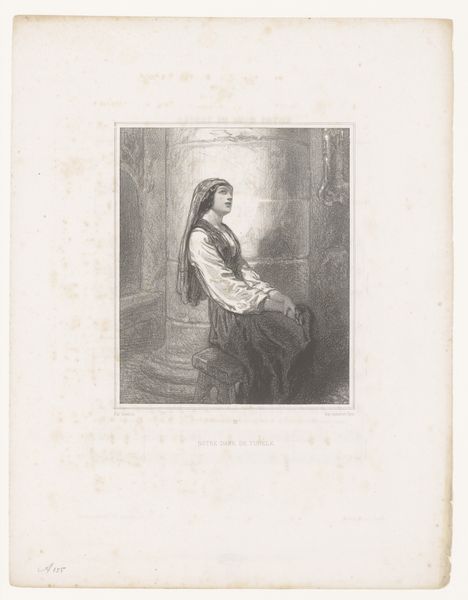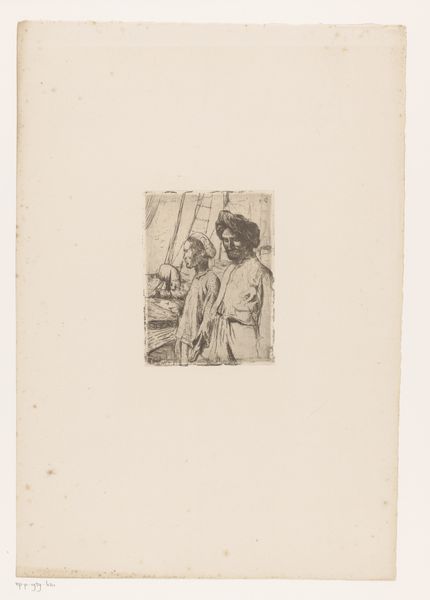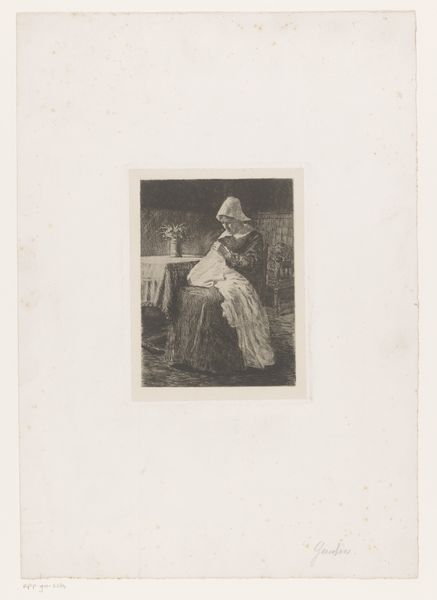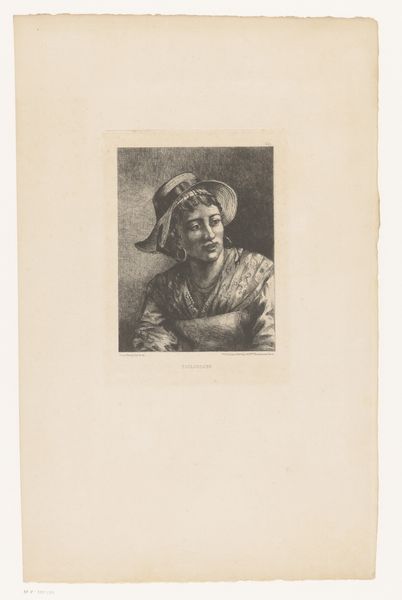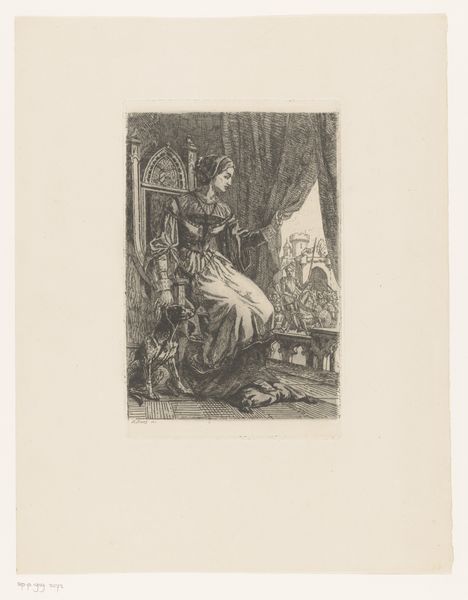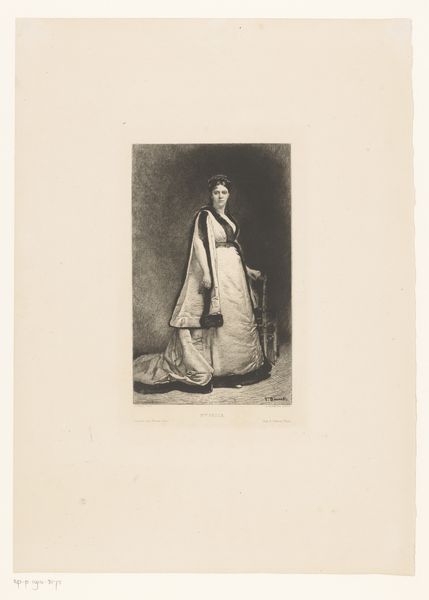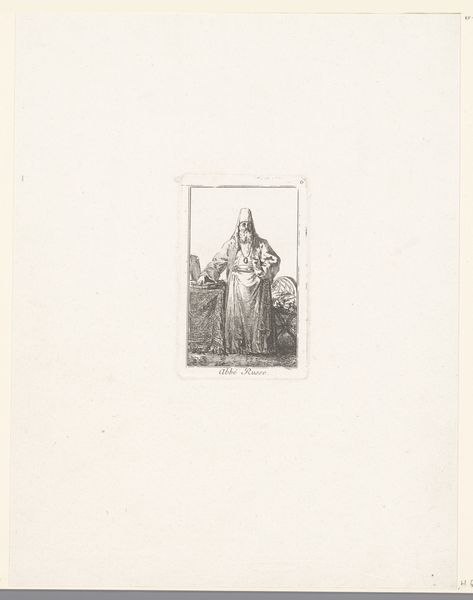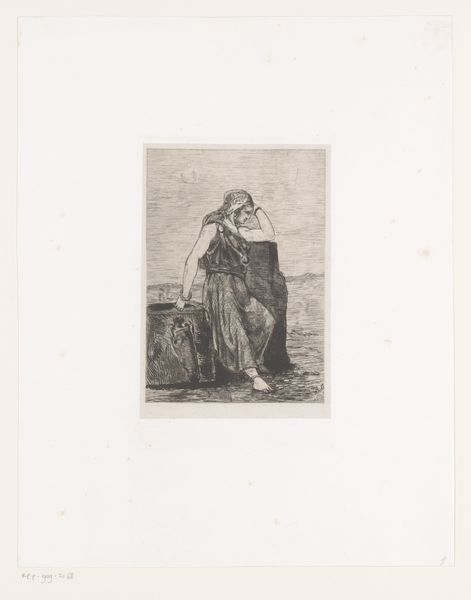
print, etching, intaglio, paper
#
portrait
#
16_19th-century
# print
#
etching
#
intaglio
#
paper
#
orientalism
#
genre-painting
Dimensions: height 204 mm, width 110 mm
Copyright: Rijks Museum: Open Domain
Editor: This intaglio print, titled "Woman on a Balustrade with Mosque in the Background", etched by Vicomte Arthur-Jean Le Bailly d'Inghuem around 1875, gives off an air of mystery. The woman's gaze and the setting suggest a narrative beyond what's immediately visible. What can you tell me about this artwork from a historical perspective? Curator: What stands out to me is how this work engages with the artistic and social phenomenon of Orientalism that swept through Europe in the 19th century. What do you think the presence of the woman and the mosque signifies? Editor: I'm guessing it exoticizes the 'Orient' for a Western audience, portraying a romanticized, possibly inaccurate, view of the East? Curator: Exactly. Consider that artistic representations during this period often served political and colonial agendas. These images contributed to a Western understanding of other cultures, and the act of depicting the "Orient" allowed artists to reinforce power dynamics. The print is not simply a portrait; it’s a statement about the relationship between the West and the East. Editor: So, it’s about more than just aesthetic interest; it is part of a larger conversation on cultural power and representation? Curator: Precisely. The consumption of these images created specific cultural identities. We should then ask ourselves how it participated in the historical construction of 'the other' in the 19th Century. And also who it might have been made for, what purposes the piece fulfilled. It raises important questions about cultural exchange, appropriation, and the role of art in shaping perceptions. Editor: That gives me a lot to think about. Thanks for contextualizing the historical complexities within this print. Curator: My pleasure! I've also come away from our exchange thinking of how its creation has marked today’s society and current imagery, which encourages more reflection about power, representation, and impact.
Comments
No comments
Be the first to comment and join the conversation on the ultimate creative platform.
